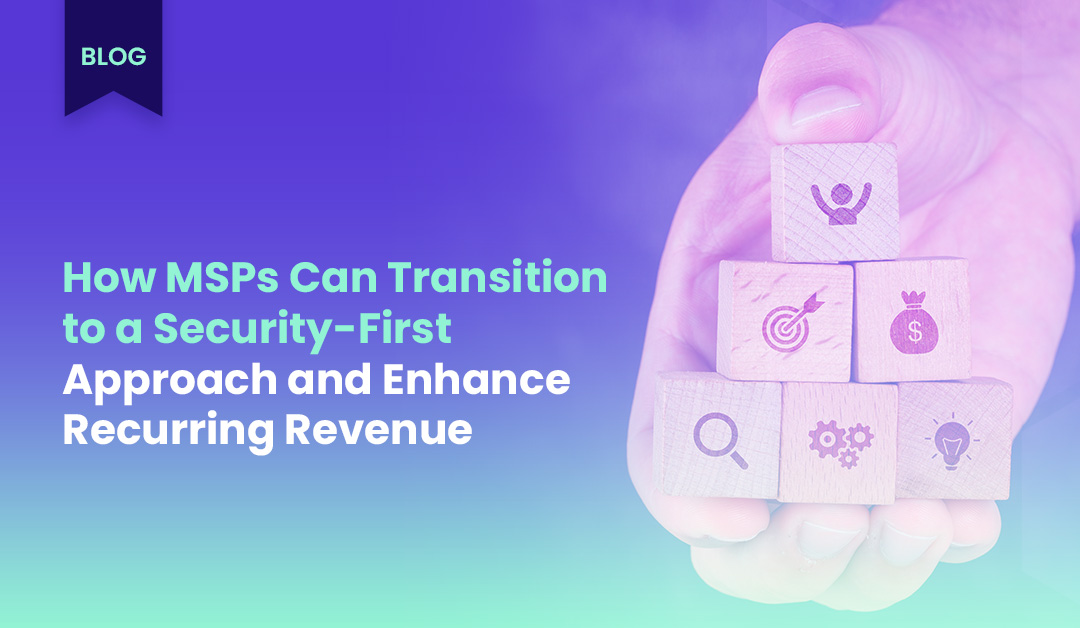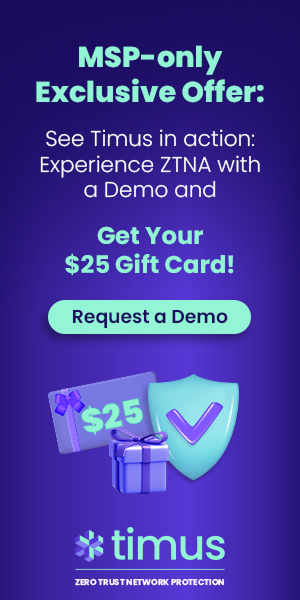How MSPs Can Transition to a Security-First Approach and Enhance Recurring Revenue
Managed Service Providers (MSPs) are increasingly recognizing the importance of prioritizing security in their service offerings. As cyberthreats continue to rise, businesses seek partners who can safeguard critical data and ensure uninterrupted operations. By adopting a security-first mindset, MSPs not only enhance client protection but also create new opportunities for recurring revenue. Below is a strategic guide to leading with security, differentiating your brand, and strengthening profitability.
Author
Date
Category
All Categories
- AI-powered security
- Attacks & Threats
- Cybersecurity
- Hybrid Cloud
- Network
- Network Firewall
- Network Protection
- News
- Remote Workforce
- Security
- Zero Trust
Contents
Popular Posts
Product
Join the Newsletter

Managed Service Providers (MSPs) are increasingly recognizing the importance of prioritizing security in their service offerings. As cyberthreats continue to rise, businesses seek partners who can safeguard critical data and ensure uninterrupted operations. By adopting a security-first mindset, MSPs not only enhance client protection but also create new opportunities for recurring revenue. Below is a strategic guide to leading with security, differentiating your brand, and strengthening profitability.
1. Evaluate Your Current Security Posture
Analyze Existing Services
- Review the managed services currently provided.
- Identify gaps in security offerings, such as endpoint protection, threat monitoring, or incident response.
Assess Certifications & Expertise
- Verify if your team holds key security certifications (e.g., CISSP, CISM, Security+).
- Determine the need for additional training or new hires with specialized skills.
Review Security Tools & Integrations
- Take inventory of your existing security tools, including SIEM solutions, threat intelligence feeds, and vulnerability scanners.
- Ensure seamless integration of tools rather than operating in silos.
2. Adopt a Security-First Mindset
Embed Security Across All Services
- Integrate security best practices into services like patch management and cloud migrations.
- Standardize threat modeling as part of project planning.
Establish Clear Security Policies
- Define protocols for device onboarding, data handling, and privileged account management.
- Develop a responsibility matrix to outline security-related task ownership.
Implement a Zero Trust Model
- Enforce continuous verification of users, devices, and network access.
- Utilize micro-segmentation to limit potential attack surfaces.
3. Build a Robust Security Portfolio
Core Security Solutions
- Provide essential services such as firewalls, antivirus solutions, and endpoint protection.
- Incorporate managed detection and response (MDR) for real-time threat detection.
Advanced Threat Protection
- Offer services like threat hunting, intrusion detection systems (IDS), and behavioral analytics.
- Integrate threat intelligence to proactively identify security risks.
Compliance & Risk Management
- Assist clients in meeting compliance requirements such as GDPR, HIPAA, or PCI-DSS.
- Provide policy creation, security training, and ongoing regulatory audits.
Business Continuity & Disaster Recovery
- Combine backup solutions with security measures for comprehensive data protection.
- Conduct attack simulations and incident response drills.
4. Structure Services for Recurring Revenue
Tiered Service Plans
- Develop structured packages (e.g., Basic, Advanced, Premium) with varying security levels.
- Include compliance audits and consulting hours in higher-tier offerings.
Subscription-Based Pricing
- Transition from project-based pricing to recurring retainers for continuous monitoring and reporting.
- Encourage multi-year agreements with value-added incentives.
Security Assessments & Upsells
- Perform periodic security posture evaluations bundled with remediation services.
- Present findings to clients, recommending necessary upgrades to drive ongoing revenue.
5. Market Your Security Expertise
Effective Positioning & Messaging
- Present your MSP as a “trusted security advisor” rather than just a technology provider.
- Highlight success stories that demonstrate breach prevention and mitigation.
Leverage Online & Offline Channels
- Utilize your website, social media, and email campaigns to emphasize security capabilities.
- Host webinars or workshops on key topics such as ransomware defense and regulatory compliance.
Strategic Partnerships
- Collaborate with cybersecurity vendors for co-marketing initiatives and lead-sharing opportunities.
- Offer bundled promotions that integrate cutting-edge security solutions with your managed services.
6. Invest in Team Training & Skill Development
Enhance Technical Expertise
- Promote continuous learning through vendor-specific security programs.
- Allocate resources for staff to earn advanced security certifications.
Foster a Security-Driven Culture
- Conduct regular team exercises focused on incident response and threat analysis.
- Train all employees, including non-technical staff, to recognize social engineering and phishing attacks.
7. Continuously Optimize & Innovate
Track Performance Metrics
- Monitor key indicators such as mean time to detect (MTTD) and mean time to respond (MTTR) to security incidents.
- Collect client feedback to refine security strategies.
Adapt to Emerging Threats
- Maintain an agile approach to evolving security risks and client concerns.
- Explore next-generation security solutions like AI-driven threat detection and automated response orchestration.
Introduce Cutting-Edge Technology
- Investigate innovations such as zero trust networking and automated threat intelligence.
- Offer pilot programs to clients eager to adopt advanced security solutions.
Conclusion
By transitioning into a security-first MSP, you not only shield your clients from growing cyberthreats but also carve out a profitable niche in the competitive IT services landscape. Embedding security at the core of your managed services fosters trust, enhances client retention, and generates sustainable revenue streams. Start by assessing your existing capabilities, reinforcing security within all offerings, and committing to ongoing improvement. With a proactive security strategy, your MSP can emerge as a market leader in safeguarding modern businesses.
Learn how Timus SASE is a must have for security-first MSPs.
Get Started with Timus
Zero Trust. Adaptive Cloud Firewall. Secure Remote Access. In one.
